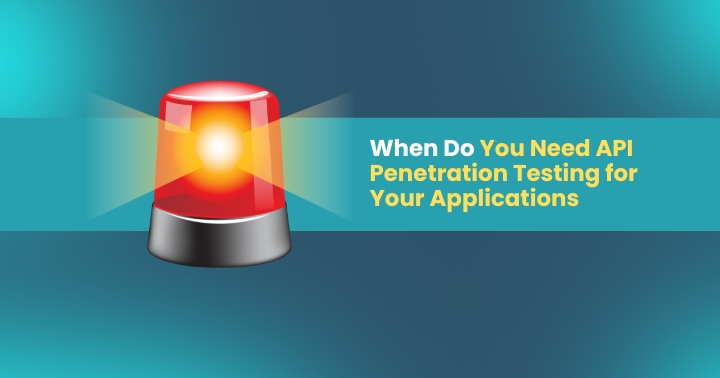APIs power almost every digital experience, from streaming services to fintech apps, silently enabling data exchange across systems. According to industry reports, they now handle over 83% of global web traffic, but they also account for a growing share of security breaches.
A single insecure endpoint can expose millions of records, making API penetration testing one of the most critical forms of preventive defence. Yet many organisations still hesitate, unsure of when it’s truly needed or how it differs from automated scanning.
This article breaks down exactly when to perform API penetration testing, what it reveals, how often to do it, and how automation and human testing can work together to protect your applications.
Combining automation with a structured penetration testing methodology allows SaaS and mobile teams to test more frequently without sacrificing depth.
What Is API Penetration Testing and Why Does It Matter
API penetration testing (also called API pen testing) is an ethical hacking process that simulates real attacks against your API to identify weaknesses that automated scans might miss.
While vulnerability scanning uses rules and pattern recognition, penetration testing adds creativity and context. Security experts think like attackers, chaining small flaws together to expose larger systemic issues.
Why it matters
- APIs are the top attack vector: OWASP reports APIs as one of the most targeted assets in modern systems.
- Compliance requires it: Frameworks like PCI DSS, HIPAA, and SOC 2 mandate periodic manual testing to validate security controls.
- Automation alone is not enough: Automated tools flag known issues but cannot detect business logic or contextual vulnerabilities.
In short, API penetration testing verifies whether your API can withstand real-world exploitation, not just pass a checklist.
You can read more about methodologies in Penetration Testing Best Practices.
How to Know If Your APIs Need Penetration Testing
Some APIs carry more risk than others. You don’t need to test everything constantly; you need to test the right things at the right time.
You should schedule penetration testing when your APIs:
- Handle sensitive or regulated data (financial, healthcare, identity).
- Authenticate or authorise users, especially across multiple roles.
- Connect to third-party systems or public endpoints.
- Undergo major code or infrastructure changes.
- Support mobile or partner applications that expand your exposure.
Example triggers:
- Launching a new payment or checkout API.
- Migrating to a new cloud provider or gateway.
- Introducing OAuth or token-based authentication.
- Integrating AI or analytics platforms that rely on API data sharing.
Even internal APIs are not exempt from insider threats, and misconfigurations can expose them just as easily as public endpoints.
What API Vulnerabilities Penetration Testing Finds
Penetration testing goes deeper than scanning by identifying logic flaws and chained exploits. Here’s what it typically uncovers:
The hidden cost of API security gaps
Research shows that the average API-related breach costs over $4 million, not counting reputational damage or compliance penalties. Many of these incidents stemmed from issues that a well-timed penetration test could have caught, particularly around logic flaws and access control.
A deeper overview of these categories is available in Best API Security Practices.
How Often Should You Perform API Penetration Testing
Testing isn’t a one-time project; APIs evolve too quickly for that. The more frequently your product changes, the more often you need validation.
General cadence recommendations:
- Before every major release or feature rollout.
- Quarterly for production systems that handle sensitive data.
- After significant environment or authentication changes.
- Monthly for high-risk APIs in financial or healthcare contexts.
Automated vulnerability scanning should fill the space between manual tests. This hybrid rhythm, continuous automation plus scheduled manual pen test, ensures both rapid detection and deep validation.
What to Expect from Professional API Penetration Testing
Partnering with experienced testers o. Specialised platforms add structure and accountability.
A professional assessment usually follows these stages:
- Scoping: Define endpoints, credentials, and test objectives.
- Mapping & Reconnaissance: Discover endpoints and analysis specifications.
- Attack Simulation: Attempt to exploit weaknesses using chained attack patterns.
- Reporting: Document every finding with severity ratings and remediation advice.
- Verification: Retest fixed vulnerabilities to confirm resolution.
Deliverables you receive
A detailed report highlighting:
- Vulnerability descriptions and technical details.
- Risk impact summaries aligned with OWASP and NIST.
- Remediation steps and prioritisation guidance.
- Compliance alignment for frameworks like PCI DSS or ISO 27001.
Many organisations use providers such as APIsec.ai that merge automated discovery with human-led validation, offering continuous coverage alongside expert insight.
How Automated API Testing Compares to Manual Testing
Automation and manual penetration testing are not competitors; they complement each other.
Automation provides the breadth; manual testing offers depth.
A modern hybrid strategy uses both automation for constant vigilance and manual testing for nuanced risk discovery.
More on implementing continuous validation is available in How to Continuously Test APIs.
Getting Started with API Security Testing
Building a strong API testing program doesn’t require starting from scratch. The key is visibility and repeatability.
Start by cataloguing all APIs across environments: public, partner, and internal. Once mapped, run an automated baseline scan to identify easy-to-fix issues like insecure headers or outdated encryption protocols.
Follow that with targeted penetration testing for APIs handling sensitive transactions or regulatory data. After patching vulnerabilities, retest to confirm closure and schedule continuous monitoring.
Teams new to security testing can leverage APIsec University, a free educational resource that helps developers and QA engineers understand attack surfaces, build secure APIs, and design automated test frameworks confidently.
Conclusion
As APIs continue to drive business innovation, they’ve also become the most exposed attack surface. Penetration testing ensures your APIs can withstand real-world attacks, not just pass automated checks.
The most resilient organisations use both continuous automated scanning for coverage and periodic manual testing for depth. Together, they form a security cycle that keeps APIs protected across every release.
To implement that balanced approach, start with APIsec.ai, the only platform offering continuous, automated API testing reinforced by expert validation.
Key Takeaways
- APIs handling sensitive or regulated data require pen testing. Automated scans alone can’t uncover logic-level or contextual vulnerabilities.
- Testing should align with change velocity. The faster your product evolves, the more often you need validation.
- Professional testing adds context and accuracy. Reports explain root causes, business impact, and compliance relevance.
- Automation plus manual testing creates layered security. Continuous scans prevent drift, while periodic pen tests verify depth.
- Hybrid platforms like APIsec.ai make this achievable, combining machine efficiency with expert review for end-to-end assurance.
FAQs
How do I know if my API needs penetration testing?
If your API processes payments, stores personal data, or connects to external systems, it should undergo penetration testing at least quarterly.
What’s the difference between API scanning and penetration testing?
Scanning identifies known vulnerabilities using automation. Pen testing simulates creative, multi-step attacks to find deeper flaws.
How often should I test my APIs?
Run automated scans continuously and perform manual tests before each major release or at least once every quarter.
Can smaller teams do penetration testing internally?
They can start with open-source tools, but full assessments require specialised expertise. Automated platforms can bridge that skill gap.
How long does a penetration test take?
Automated scans finish within hours; manual tests may take several days or weeks, depending on the scope.
.webp)

.webp)

